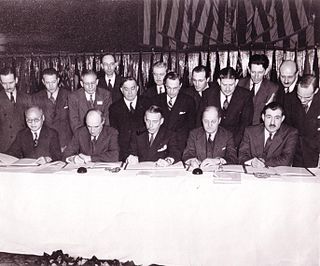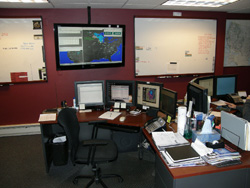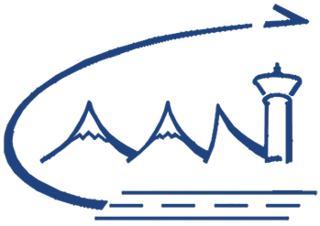
The Federal Aviation Administration (FAA) is a U.S. federal government agency within the U.S. Department of Transportation which regulates civil aviation in the United States and surrounding international waters. Its powers include air traffic control, certification of personnel and aircraft, setting standards for airports, and protection of U.S. assets during the launch or re-entry of commercial space vehicles. Powers over neighboring international waters were delegated to the FAA by authority of the International Civil Aviation Organization.

General aviation (GA) is defined by the International Civil Aviation Organization (ICAO) as all civil aviation aircraft operations except for commercial air transport or aerial work, which is defined as specialized aviation services for other purposes. However, for statistical purposes, ICAO uses a definition of general aviation which includes aerial work.

The Civil Aviation Authority (CAA) is the statutory corporation which oversees and regulates all aspects of civil aviation in the United Kingdom. Its areas of responsibility include:

A private pilot licence (PPL) or private pilot certificate is a type of pilot licence that allows the holder to act as pilot in command of an aircraft privately. The basic licence requirements are determined by the International Civil Aviation Organization (ICAO), but implementation varies from country to country. According to ICAO, an applicant must be at least 17 years old, demonstrate appropriate knowledge and skill, and hold at least a Class 3 medical certificate. Different PPLs are available for different categories of aircraft, such as aeroplane, helicopter, airship, etc., and are not interchangeable, although experience from a PPL in one category may be credited towards the issue of another.
The airline transport pilot license (ATPL), or in the United States of America, an airline transport pilot (ATP) certificate, is the highest level of aircraft pilot certificate.
A commercial pilot licence (CPL) is a type of pilot licence that permits the holder to act as a pilot of an aircraft and be paid for their work.

The European Union Aviation Safety Agency (EASA) is an agency of the European Commission with responsibility for civil aviation safety in the European Union. It carries out certification, regulation and standardisation and also performs investigation and monitoring. It collects and analyses safety data, drafts and advises on safety legislation and co-ordinates with similar organisations in other parts of the world.

The Convention on International Civil Aviation, also known as the Chicago Convention, established the International Civil Aviation Organization (ICAO), a specialized agency of the United Nations charged with coordinating international air travel. The Convention establishes rules of airspace, aircraft registration and safety, security, and sustainability, and details the rights of the signatories in relation to air travel. The convention also contains provisions pertaining to taxation.
The Civil Aviation Safety Authority (CASA) is an Australian statutory authority responsible for the regulation and safety oversight of Australia's civil aviation. CASA was formed on 6 July 1995 under the Civil Aviation Act 1988 when the Civil Aviation Authority was split into two separate government bodies: Airservices Australia and CASA.
Pilot licensing or certification refers to permits for operating aircraft. Flight crew licences are issued by the civil aviation authority of each country, which must establish that the holder has met minimum knowledge and experience before issuing licences. The licence, along with the required class or type rating, allows a pilot to fly aircraft registered in the licence issuing state.
An airworthiness directive is a notification to owners and operators of certified aircraft that a known safety deficiency with a particular model of aircraft, engine, avionics or other system exists and must be corrected.

A flight instructor is a person who teaches others to operate aircraft. Specific privileges granted to holders of a flight instructor qualification vary from country to country, but very generally, a flight instructor serves to enhance or evaluate the knowledge and skill level of an aviator in pursuit of a higher pilot's license, certificate or rating.

A flight dispatcher assists in planning flight paths, taking into account aircraft performance and loading, enroute winds, thunderstorm and turbulence forecasts, airspace restrictions, and airport conditions. Dispatchers also provide a flight following service and advise pilots if conditions change. They usually work in the operations center of the airline. In the United States and Canada, the flight dispatcher shares legal responsibility with the commander of the aircraft.

The pilot in command (PIC) of an aircraft is the person aboard an aircraft who is ultimately responsible for its operation and safety during flight. This would be the captain in a typical two- or three-pilot aircrew, or "pilot" if there is only one certificated and qualified pilot at the controls of an aircraft. The PIC must be legally certificated to operate the aircraft for the specific flight and flight conditions, but need not be actually manipulating the controls at any given moment. The PIC is the person legally in charge of the aircraft and its flight safety and operation, and would normally be the primary person liable for an infraction of any flight rule.

Civil aviation is one of two major categories of flying, representing all non-military and non-state aviation, both private and commercial. Most countries in the world are members of the International Civil Aviation Organization and work together to establish common Standards and Recommended Practices for civil aviation through that agency.
In Australia, pilot licences are issued by the Civil Aviation Safety Authority. Licences are issued for different categories of aircraft, including aeroplanes and helicopters.
The Directorate General of Civil Aviation (DGCA) is a statutory body of the Government of India to regulate civil aviation in India. It became a statutory body under the Aircraft (Amendment) Act, 2020. The DGCA investigates aviation accidents and incidents, maintains all regulations related to aviation and is responsible for issuance of licenses pertaining to aviation like PPL's, SPL's and CPL's in India. It is headquartered along Sri Aurobindo Marg, opposite Safdarjung Airport, in New Delhi. The Government of India is planning to replace the organisation with a Civil Aviation Authority (CAA), modelled on the lines of the American Federal Aviation Administration (FAA).

The Civil Aviation Authority of Nepal is an independent civil aviation regulator. It was established as a Nepali government body in 1998 and is headquartered in Kathmandu.

A pilot logbook is a record of a pilot's flying hours. It contains every flight a pilot has flown, including flight time, number of landings, and types of instrument approaches made. Pilots also log simulator time, as it counts towards training.

Regulation of unmanned aerial vehicles (UAVs) involves setting safety requirements, outlining regulations for the safe flying of drones, and enforcing action against errant users.













